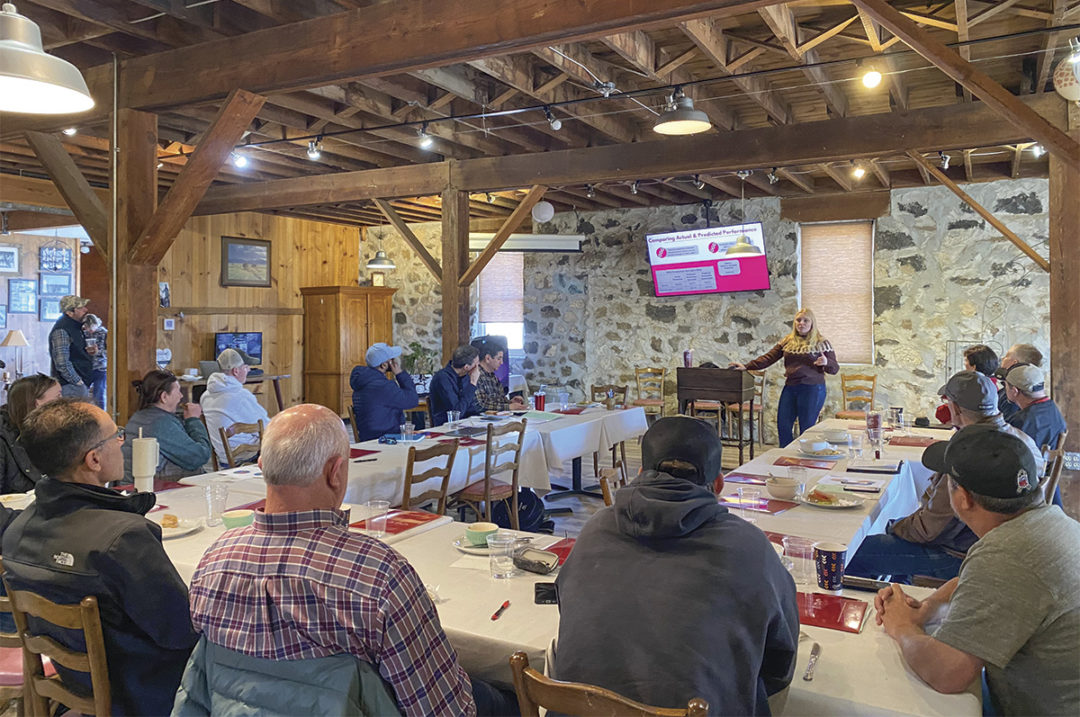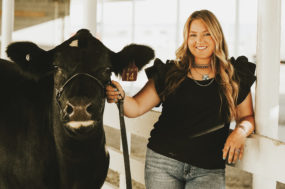Dairy producers and industry representatives in the Magic Valley gathered at Mountain View Barn in Jerome on Feb. 28 for a workshop to discuss genomic testing and potential economic advantages of implementing the practice. Washington State University (WSU) and the University of Idaho presented research on several case studies involving dairies in both Idaho and Washington, following selected animals from youth through first lactation and analyzing profitability based on genomic testing.
Holly Neibergs, genetics professor and assistant director at the college of agricultural, human and natural resource sciences at WSU, gave a brief lesson on the basics of genomics. She opened the conversation with a reminder that overall performance is a combination of genetics and environment.
“Genetic potential affects all parts of the wheel,” said Neibergs in reference to both sustainable and profitable dairy practices and the importance thereof. Genomic testing allows dairy producers to make herd management decisions – aka culling decisions – earlier in a calf’s life. Test results can confirm genetic potential of an animal long before she enters her first lactation, saving rearing costs.
Neibergs gave attendees a basic understanding of how genes are expressed in cattle and described how cattle can be genotyped – a collection of genetic material – through genomic testing. Several companies offer genomic testing for around $15-$40 and will provide materials to gather hair or blood samples. Once a sample is collected, it is submitted to a laboratory for testing. Tests will analyze specific genetic markers against the national herd average to provide a predicted transmitting ability (PTA). Results are then sent to the producer to utilize as they see fit.
Neibergs pointed out that phenotypic evaluations work well when it comes to traits with high heritability, such as conformation traits. However, genomic evaluations allow for a much deeper dive into genetic potential for traits that aren’t as highly heritable. Genomic testing can also catch mistakes in parent identification – some of the dairies involved in WSU’s recent study found up to 22% of their animals had been misidentified, which was corrected through genomic testing.
Allison Herrick, Ph.D. candidate at WSU, shared preliminary findings from the Washington-Idaho study.
“When comparing the top quartile of heifers [ranked by the heifer’s genomic fluid milk] to the bottom quartile, we saw an average of 791 dollars more in revenue from the top-quartile animals, which is significantly more than the cost of a 40 dollar genomic test,” said Herrick. The study will conclude in late 2024.
Several local dairy producers attended the event along with industry experts. A lively conversation followed the conclusion of the presentations, discussing the acceptance of genomic testing in local herds and the potential opportunities for dairy producers. Concerns regarding genomic testing included the price per animal, especially in large herds. Interest was expressed surrounding potential profit gains from genomic testing.



.jpg?t=1687979285&width=640)





